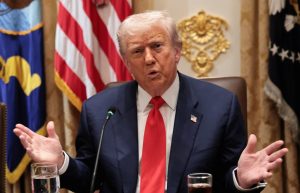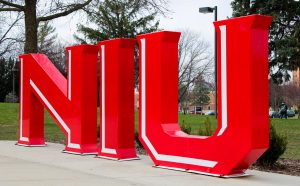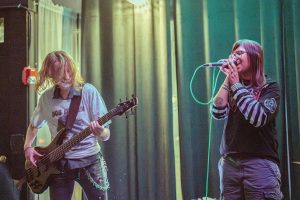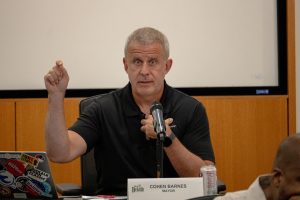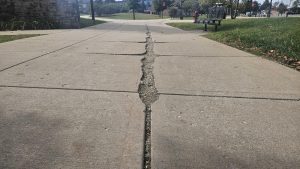Friday marks 50th anniversary of largest NIU student protest
April 11, 2012
It’s 1962 at NIU.
All women must return to their residence by 10 p.m. daily. All dorms are single-sex buildings; opposite sex is only allowed in the lobby. Students over 21 wanting to live off-campus must live in approved housing by the university. Any women that live off-campus must have a housemother.
Today, restrictions like these may seem unreal, but in 1962, they were something NIU students thought were worth fighting.
On April 13, 1962, just 50 years ago, an estimated 1,500 to 2,000 students gathered outside of Swen Parson Hall in protest for action.
Barry Schrader, spokesman for the Committee for Student Rights (CSR) in 1962, said the night before the protest, he spoke at the Student Senate meeting in Still Gym. Schrader said, for the first time ever, the Student Senate was forced to move their meeting from their normal, small conference room to the gymnasium because hundreds of students were in attendance. At the meeting, Schrader announced 12 resolutions the students were asking for.
“Some of them were frivolous,” Schrader said. “Some of them I look back on today and say it was kind of silly.”
Schrader said women’s dorm hours were a big issue at that time. Six nights a week, women were locked in their dorms at 10 p.m.; men had no curfew.
“You had to have your date back to the hall or they were penalized,” Schrader said.
Students also asked for a student disciplinary board because all punishments were handed out by deans at that time, Schrader said.
“If you get three traffic violations, you could get kicked out of school,” Schrader said. “It was an option. They didn’t enforce it often, but it was there.”
The protest occurred because the administration wouldn’t take the students seriously, Schrader said. He said CSR tried to negotiate with the administration, but nothing happened.
Numerous people spoke at the rally, including Schrader, then-NIU President Leslie Holmes and Peace Corps leader Sgt. Shriver.
“We sort of boycotted classes that day,” Schrader said. “I think a lot of the teachers went along with it because I saw them there.”
Students with arm-bands on were “guards” during the protest to keep the protesters under control, Schrader said. He said he was worried about it getting violent because speakers got the audience “whipped up to a frenzy” during the demonstration.
“Not one rock was thrown,” Schrader said. “Not one tomato was thrown at the president. No one cursed him when he came through the crowd.”
Schrader said he took a big risk planning the rally, because administration threatened him and other members of CSR beforehand that if the rally became violent, they would be expelled.
“I really was nervous that day. I was so uptight I could hardly talk,” Schrader said. “I was watching for trouble.”
After the rally, Schrader said the resolutions they presented were taken under advisement by the faculty-administrative council. He said over the next year they received four or five of the resolutions students asked for.
Protesting at NIU didn’t stop after this rally, which required police to find different ways to keep students safe. Roger Lewis, a retired phone worker, said he was in charge of installing phones for NIU in the late ‘60s. He said during the “Kent State riots” he was instructed to install phone jacks on the top of tall buildings such as the Holmes Student Center, Watson, Grant and Stevenson towers to help police monitor campus.
“Understand, that was before your cellphones, radios and that type of thing, so that was the type of communications that the police department had to use — the old standard dial-up telephone,” Lewis said.
If students were getting ready to march or protest, police officers would plug a phone in on the roof and watch with binoculars for anything unusual or potentially dangerous, Lewis said.
Schrader said he believes there isn’t as much student activism anymore because everyone has been “lulled into complacency” by the digital age.
“They stare at the computer all day long, they’re texting on their iPads, iPods and iPhones,” Schrader said. “It’s taking a lot of the individuality out of the student life.”
Associate Economics Professor Stephen Karlson said protests can be seen throughout the past of the United States. This country had civil rights demonstrations, protests of the Vietnam War, and more recently the Occupy movement, Karlson said. He said the successfulness of protests is a matter of interpretation.
“There are no segregated lunch counters any more, people who object to voter identification laws rely on legal precedent settled in the Voting Rights Act of 1962, and the war in Vietnam became unpopular with the general public,” Karlson said.


